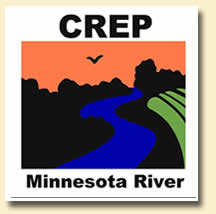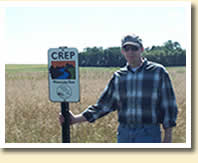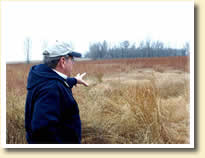
In 1998, the largest, private-lands conservation effort in the state began on the Minnesota River, one of the nation’s most polluted. The purpose of the effort was to improve the river’s water quality and restore wildlife habitat. In just four years, more than 100,000 acres were secured into permanent conservation easements through the Conservation Reserve Enhancement Program (CREP).
The Minnesota River CREP combined the U.S. Department of Agriculture’s Conservation Reserve Program (CRP) with the state’s Reinvest in Minnesota Reserve Program (RIM) to set aside environmentally sensitive land in the 37-county Minnesota River Basin. Targeted acres included frequently flooded cropland in the Minnesota River Valley and its principal tributaries, riparian buffers along cropland identified as major pollution sources, and wetlands that could be restored and provide water quality and wildlife benefits to the Minnesota River and its tributaries.
Recently, the 100,000-acre goal was met, with more than 4,000 of those acres enrolled in Brown County alone. The initiative was one of the largest efforts to restore habitat and improve water quality in the Minnesota River and its tributaries. CREP officially ended in the Minnesota River Basin in September 2002.
In the Little Cottonwood River Watershed, this program was used to retire more than 2,300 acres of marginal cropland, with the majority of the acres located in the 100-year floodplain of the river. This program was the single most effective tool to help deal with flooding, habitat loss, and water pollution problems in the watershed.
Gerald Riederer
(photo at right), a farmer in the Little Cottonwood River Watershed, has
explained the difficulty of farming a ten-acre field that floods frequently.
He enrolled that field in CREP and planted it to native grasses. Read
what Riederer and other conservation
landowners in the watershed say about CREP.
Next
with CREP sign


